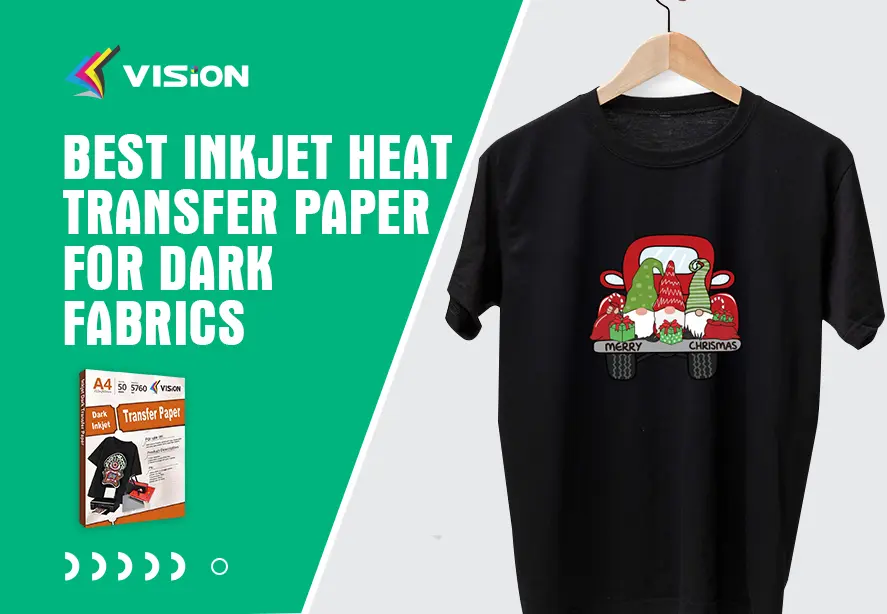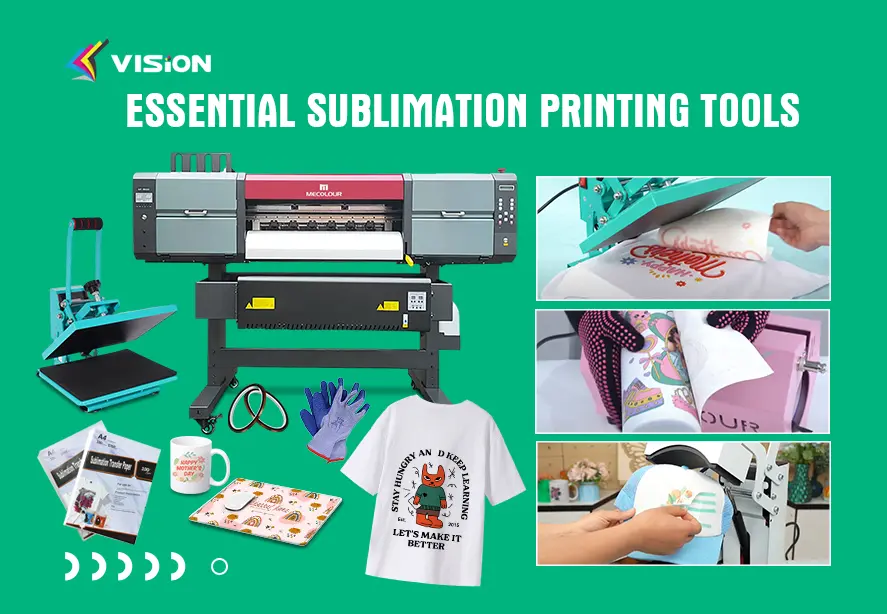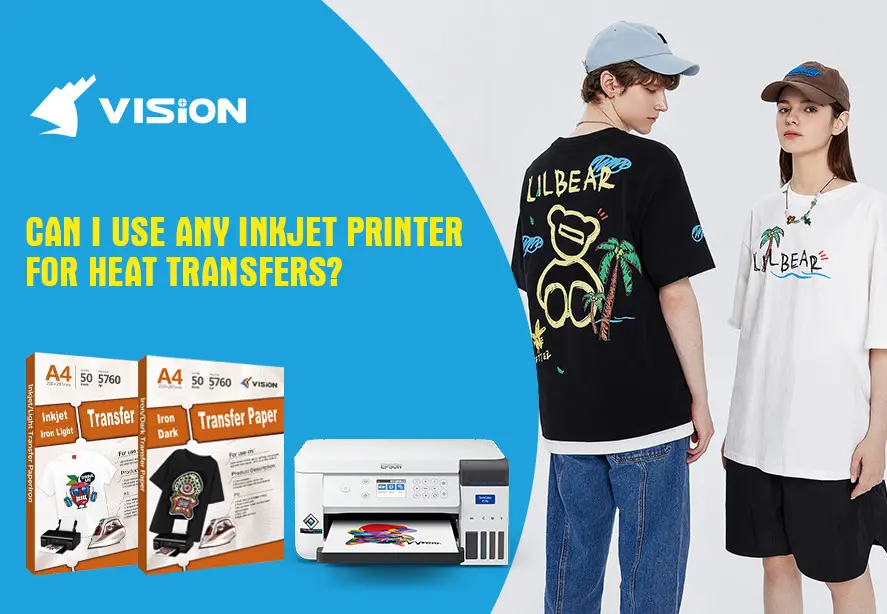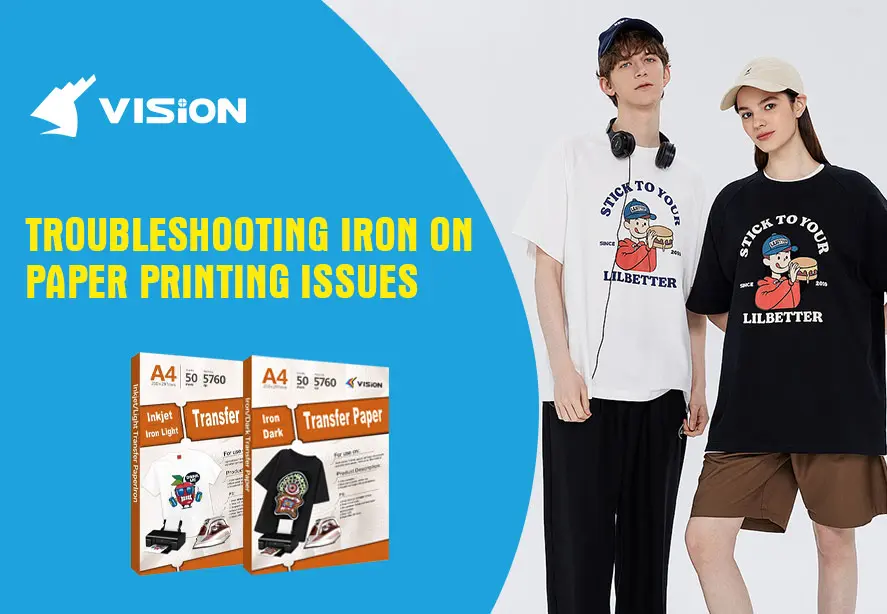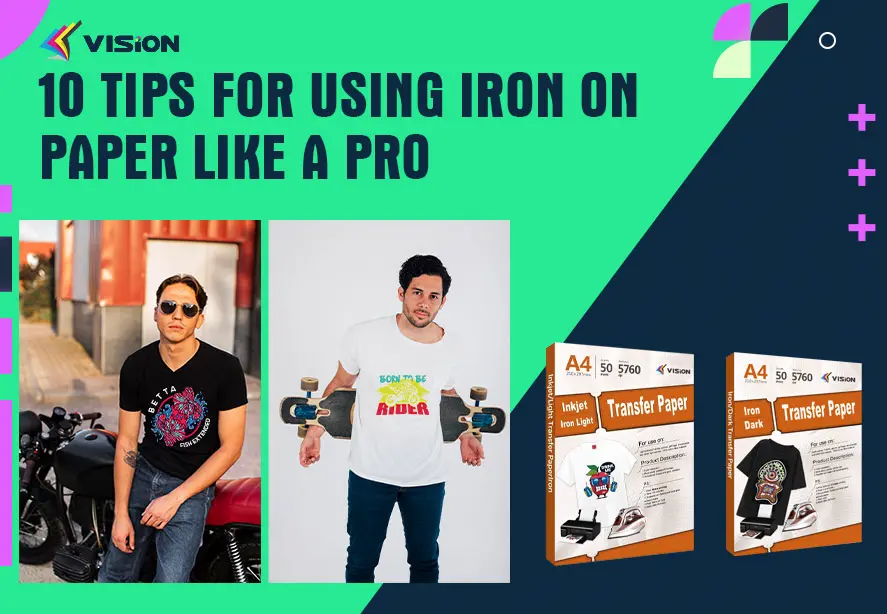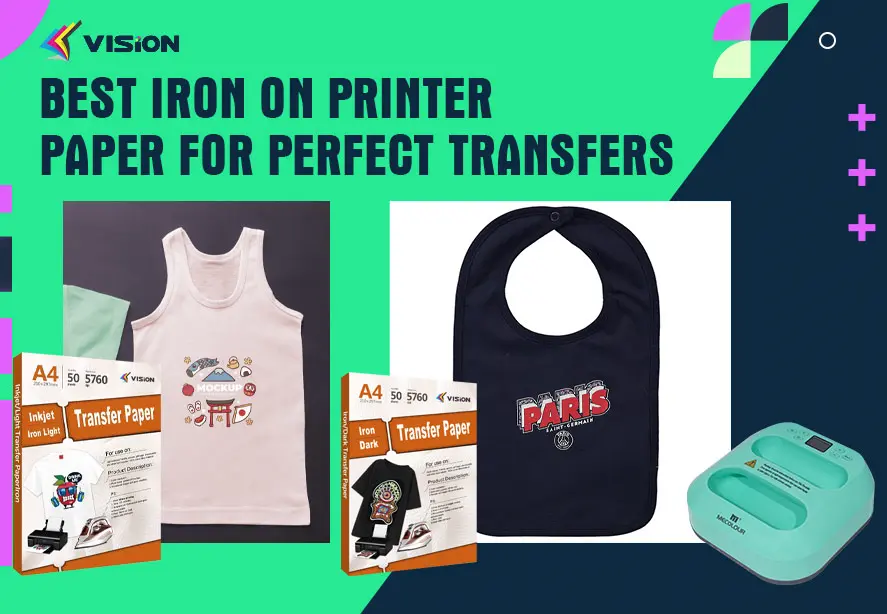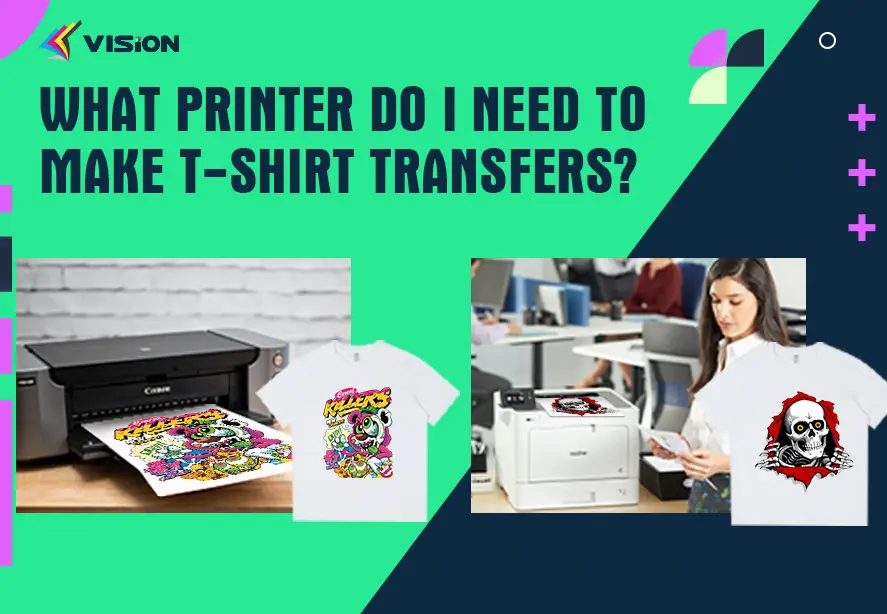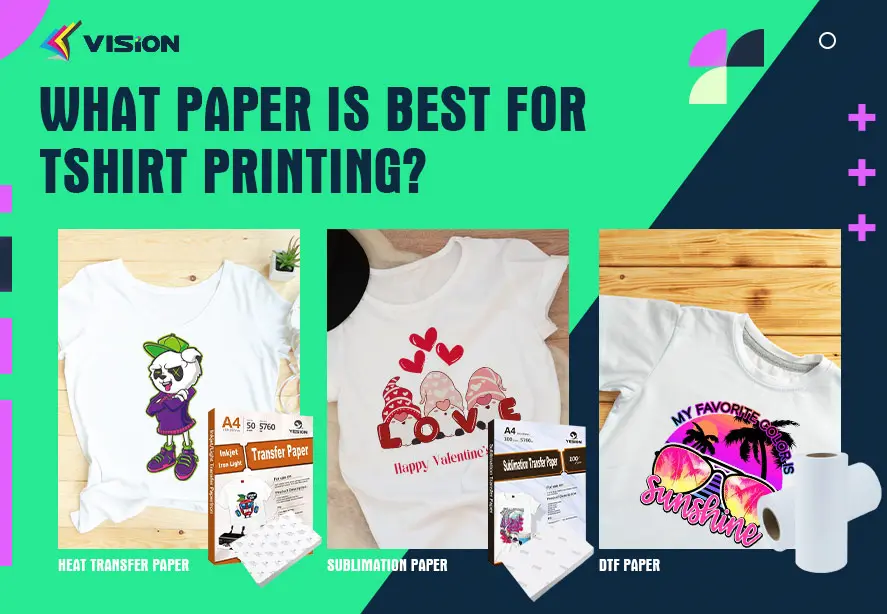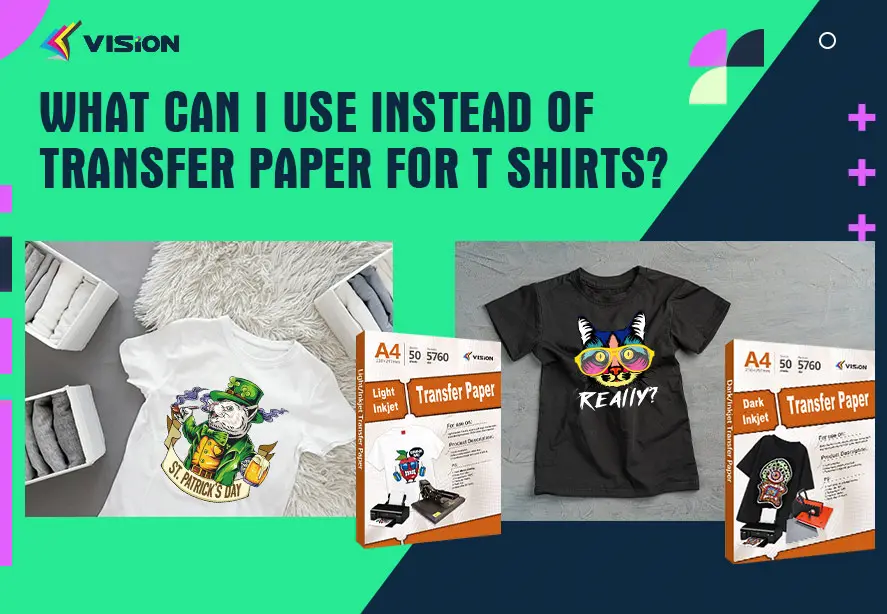Heat Press vs. Iron on T-Shirt Transfer Paper?
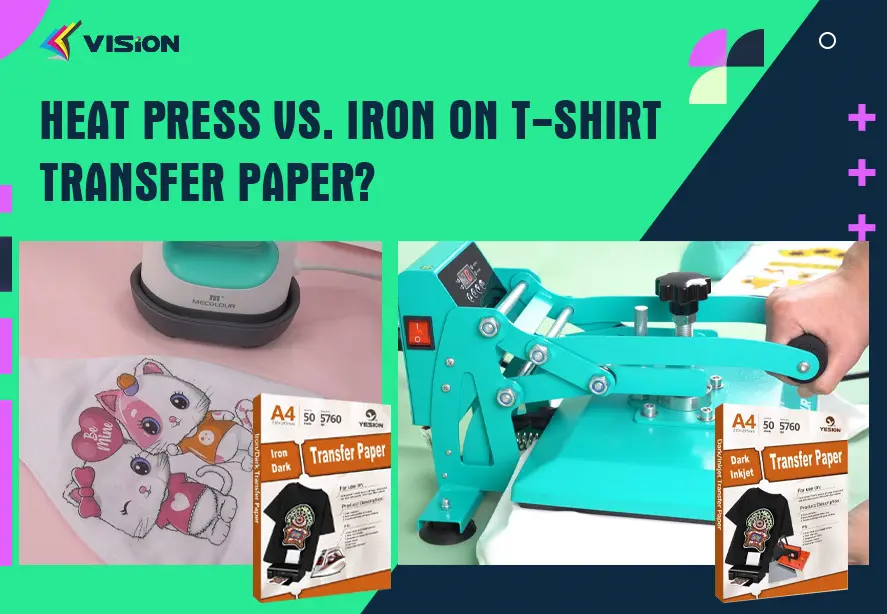
When it comes to creating custom t-shirts using transfer paper, one of the most common questions we encounter is whether a heat press is necessary. While a heat press can certainly be a valuable tool for applying t-shirt transfer, it’s not always essential. Let’s explore this topic in depth to help you make an informed decision about your t-shirt printing process.
Understanding Transfer Paper Application
Transfer paper is a popular method for creating custom t-shirts, allowing you to print designs onto special paper and then transfer them onto fabric. The process typically involves printing your design onto the transfer paper using an inkjet or laser printer, then applying heat and pressure to transfer the design onto the shirt.
Heat Press vs. Iron
A heat press offers several advantages:
Even pressure: Heat presses provide consistent pressure across the entire design, ensuring a uniform transfer.
Precise temperature control: Heat presses allow you to set exact temperatures, which is crucial for different types of t-shirt transfer paper.
Timed application: Most heat presses have built-in timers, ensuring you apply heat for the correct duration.
Larger surface area: Heat presses can accommodate larger designs more easily than irons.
Consistent results: With a heat press, you’re more likely to achieve professional-looking results consistently.
How to use Vision inkjet light heat transfer paper for cotton tshirt?
Household Iron Advantages:
More affordable and accessible;
Suitable for occasional or small-scale projects;
No additional storage space required;
Versatile for other household tasks.
While it’s possible to use a household iron for T-shirt transfer paper, it comes with some challenges:
Uneven pressure: It’s difficult to maintain consistent pressure across the entire design with an iron.
Temperature fluctuations: Irons may not maintain a steady temperature throughout the application process.
Time-consuming: You may need to spend more time ensuring the entire design is properly transferred.
Risk of scorching: Without precise temperature control, there’s a higher risk of damaging the fabric or transfer.
Limited size: Irons have a smaller surface area, making it challenging to transfer larger designs.
How to use inkjet Light Transfer Paper With One Iron?
Factors to Consider
Project Scale:
If you’re planning to create t-shirts in large quantities or as a business venture, a heat press might be a worthwhile investment. For occasional or small-scale projects, a household iron can suffice.
Design Complexity:
Intricate designs or those with multiple colors may benefit from the precision of a heat press, while simpler designs can often be successfully applied with an iron.
Fabric Type:
Some fabrics respond better to the consistent heat and pressure of a press, while others can be easily damaged by excessive heat, making an iron a safer choice.
Budget:
Heat presses represent a significant investment, whereas most households already own an iron. Consider your budget and how frequently you’ll be creating custom shirts.
Whether you choose a heat press or an iron, consider the following tips for optimal results:
Follow manufacturer instructions: Different transfer papers may require specific temperature and pressure settings.
Pre-wash your T-shirts: This removes any sizing or chemicals that might interfere with the transfer process.
Use a flat, hard surface: This is especially important when using an iron.
Allow the transfer to cool completely before peeling: This helps ensure the design adheres properly to the fabric.
Test on a scrap piece of fabric: This allows you to perfect your technique before working on your final product.
We recommend starting with an iron if you’re new to t-shirt printing or only plan to make shirts occasionally. However, if you’re planning to produce multiple T-shirts or want to achieve professional-looking results consistently, investing in a heat press is highly recommended.
Remember, the key to successful t-shirt transfer lies not just in the tools you use, but also in the quality of your transfer paper, the precision of your technique, and your attention to detail throughout the process. Whether you choose an iron or a heat press, practice and patience will help you achieve great results in your custom t-shirt creations.



